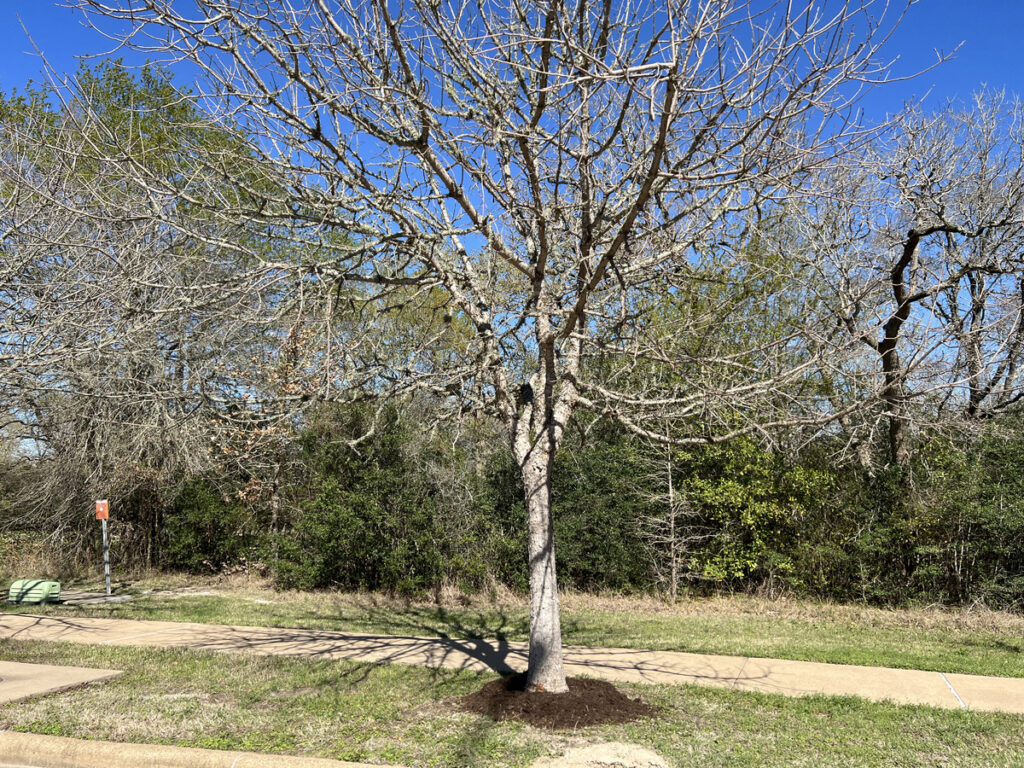When applied and maintained correctly, mulch has many benefits for trees. It conserves water, reduces weeds and competition from other plants, and can regulate soil temperature. Keeping soil warmer in the winter and cooler in the summer. Organic mulch also helps soil by encouraging helpful microorganisms, which can improve soil over time.
However, if mulch is not applied or maintained properly, it can cause problems. Too much mulch can prevent water from reaching the soil and can lead to the growth of fungi and bacteria.
Types of mulch
Mulch comes in various shapes, sizes, and colors. It can be made from different materials which are usually organic, but sometimes inorganic.
The most common type of mulch used around trees is bark or wood chips. These organic mulches break down slowly and add nutrients back into the soil.
Mulches are often by-products from other industries. In Texas, mulch such as cotton gin trash, rock, pecan hulls, rice hulls, plastic, and sometimes brick are used. In West Texas, rock is popular because it is readily available. In East Texas, bark, wood chips, or pine needles are commonly used, as these come from the wood product industries.
Application
- Apply no more than a two-to-three-inch layer of mulch.
- Do not pile mulch up against the tree trunk. This is called “volcano mulching” and should be avoided. Leave space between the trunk and mulch.
- Spread the mulch evenly around the tree, out to the edge of the tree’s branches.
- Avoid using white or black rocks as mulch because they enhance the effect of strong sunshine. Choose natural colors like gray, brown, or tan instead.
- Do not use plastic or other impermeable materials as mulch. Plastic blocks water from reaching the soil and stops air from getting to the roots, which is important for their growth.
